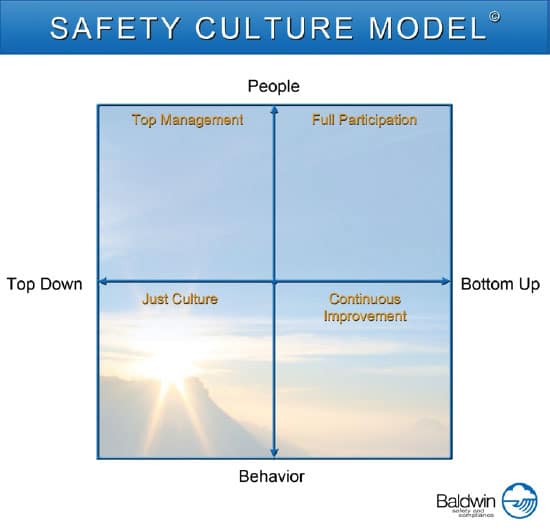Safety Culture: How Does Your Culture Grow?

Since the advent of safety management systems (SMS) at the beginning of this century, there have been many articles written about safety culture. Google the subject and you’ll find more treasure than if you were searching for real estate in Florida. But what does it mean? Does anyone actually think about their safety culture, either individually or as an organization? To paraphrase Mark Twain, “Safety culture is like the weather. Everyone talks about it, but nobody does anything about it.”
Some writers maintain that every organization has a safety culture. It might be weak or strong, or somewhere in between. It might even be measured in negative terms – worse than if the organization had a neutral approach to safety. But every organization has a specific way of dealing with safety issues.
Given that our primary audience is business aviation professionals, and that safety is endemic to our industry, I prefer to start with the premise that every flight department has a positive safety culture. I like the definition that is offered by SKYbrary: “Safety culture is the way safety is perceived, valued and prioritized in an organization. It reflects the real commitment to safety at all levels in the organization.”
If your organization has made a commitment to implement a safety management system, you have at least some measure of a positive safety culture.
It may not be motivated entirely by a concern for safety (e.g., the FAA, your insurance company or a competitor may have been a motivating factor), but at least you’re moving in that direction. You have to be true to the principles, otherwise the SMS will soon be recognized as a sham by employees and outside observers. To assure success, managers must continually nurture the growth of a positive safety culture throughout the organization. Periodically measuring the status of your safety culture would be a valuable tool in promising that continuous growth.
Several aviation-oriented safety culture surveys are available in the marketplace. Additionally, the NBAA Safety Committee is developing a safety culture survey that it plans to make available on its website later this year. In the meantime, here is a proprietary survey model that Baldwin Aviation recently initiated for its clients. It was developed through collaboration with subject matter experts on SMS, human factors, polling and modeling. Ultimately in our approach, an organization’s total safety culture is a combination of four profiles (see figure 1 below). However, usually one or two cultural profiles are more dominant than the others, depending on the primary characteristics in that culture.

Figure 1. Safety Culture Model
The Safety Culture Model looks at each profile in terms of people and their behaviors. People drive the culture from either top down (executives) or bottom up (employees). Both are essential to create a well-balanced safety culture. Keeping this in mind, let’s look at each of the four profiles.
Top Management
The first safety culture profile is called “Top Management” (upper left hand quadrant). Top Management culture pays attention to the involvement and commitment from the accountable executive(s) within the enterprise/corporation. Leading a safety initiative from the top down is the only way SMS can become embedded into the corporate culture.
Just Culture
The second profile is called “Just Culture” (bottom left hand quadrant), which has a top-down emphasis as well since it relies on upper management to communicate, support and uphold the concept for a Just Culture. A Just Culture is one where front-line operators and others are not punished for thier actions, omissions or decisions that are commensurate with their experience or training; but where gross negligence, willful violations and destructive acts are not tolerated. Open communication and reporting any safety-related information should be encouraged.
Full Participation
The third profile is called “Full Participation” (top right hand quadrant), which is sensitive to safety relationships and communication among the team. It relies on a bottom-up approach, where the team is proactively involved in all aspects of safety. Organizations often have strong participation when a strong Just Culture exists.
Continuous Improvement
The fourth profile is called “Continuous Improvement” (bottom right hand quadrant), which is bottom-up focused. The team looks for ways to improve the safety of the operation through full participation, and supports changes to policies and procedures. Following SOPs, conducting internal audits and investigating safety issues/concerns are all ways to ensure continuous improvement. A safety operation never becomes static; it is always in continuous motion striving to identify future hazards before they become a threat to the operation.
While the Safety Culture Model provides a platform for measuring and interpreting an organization’s safety culture, Baldwin’s proprietary process for client reviews includes a well-rounded look at how the safety culture is reflected in the applications processes. How consistently does the organization use the various SMS tools? How thorough is their reporting and follow-up? Do they utilize outside resources (OEM, ATC, FBO, etc.) in addressing their safety concerns? Are corrective actions appropriate and complete?
The picture that evolves from these reviews is usually an accurate depiction of the operator’s level of maturity in SMS development. The safety culture provides the environment for growth and nurtures development by allowing sunlight, water and nutrients in abundance. Over time, it will grow to be a healthy Stage 3 operator.
 Baldwin Safety & Compliance
Baldwin Safety & ComplianceCustomized Safety Management programs developed by experienced and credentialed safety professionals include training, manual management and SMS implementation/software. Based on ICAO and other international standards and regulations, Baldwin’s programs support Business Aviation, Charter, FBO, Airport, Medical Transport and Regional Airlines by providing advanced software, an outstanding customer experience and our Commitment to Excellence.
http://www.baldwinsms.com/
© 2025 Baldwin Safety & Compliance. All Rights Reserved.
Next ArticleRelated Posts

Emerging Security Threats in Business Aviation: Activism and Down-Route Risks
Security incidents affecting business aviation do not need to involve violence to have an operational impact. A protest delaying crew movements, blocking access to a hangar or resulting in an unauthorized photograph of a sensitive client can all trigger reputational, financial or compliance concerns for operators.

Little Things Matter: The Lost Key of the Titanic
Ultimately, the story of the Titanic’s lost key is a call to action for aviation professionals. It underscores the need for unwavering attention to detail, robust systems to catch human error and a culture that prioritizes safety over haste.

